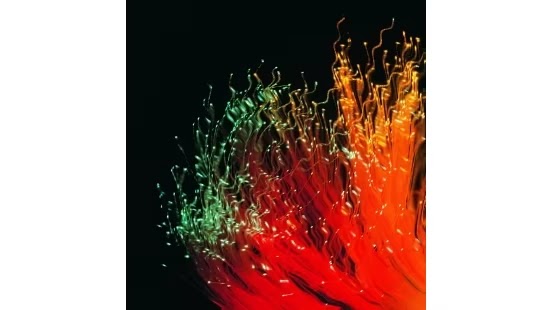
Instructor
Professor Andrea Fratalocchi
Course Description
The course introduces the student to different types of photonics systems. The course focuses on real-world devices and modern theories, which can be used in research to study advanced light-matter interactions and in industrial environments to model, design, and optimize different types of light-wave architectures. Topics covered in the course are listed as follows.
Light propagation in anisotropic crystals. Dielectric and susceptibility tensors. Symmetric nature of the Dielectric tensor. Plane wave solutions in anisotropic materials. Ellipsoid equation and fields distribution. Birefringence. Classification of solutions into ordinary and extraordinary waves. Plane wave solutions in uniaxial crystal. Ordinary “o” and extraordinary “e” waves. Index ellipsoid. Analysis of a generic waveplate retarder system. Ordinary and extraordinary waves. Jones matrices. Half-wave retarder: theory and application. Quarter-wave retarder. The Electro-Optic effect. General formulation with the electro-optic tensor. Example of application with KDP crystal. Introduction to the electro-optic amplitude modulation of light. Reduction to diagonal form of the index ellipsoid in the presence of an electric field. Frequency modulation of light with anisotropic crystals. introduction to the problem of the interaction of light with sound waves. Interaction of light and sound. Vectorial solution of Maxwell’s equations though coupled mode analysis. Conservation o f energy and momentum of photons. Bragg interaction. Coupled mode analysis of acousto-optic interactions. Full wave solution of Bragg interaction. Acousto-optic amplitude modulation of light. Introduction to plasmonic. Macroscopic formulation and classical microscopic theory via free-electron gas model. Waveguide theory. Decomposition into transverse and longitudinal components. Definition of Modes. Modes orthogonality relations. Physical meaning of modes orthogonality and completeness of the modal set. Field decomposition into guided modes and radiation modes. Planar structures. TE and TM modes. Full wave analysis of the multilayer structure. Transfer matrix approach. General dispersion relation for TE modes. Coupled mode theory in space. Exact formalism based on the reciprocity theorem of Maxwell’s equations. The directional coupler. Coupled mode equations and their solutions. Side coupling with a waveguide. Prism and grating assisted coupling. Coupled mode equations. Coupled mode theory of periodic one dimensional systems. Bragg interactions with waveguide modes. Reflection and transmission of a bragg filter. Applications. Photonic bandgap. Physical origin of bandgaps. Time Dependent Coupled Mode Theory. (TDCMT) Quality factors. Energy and power flows in TDCMT. Equivalent circuit and mechanical representations. Model of a resonator coupled to the waveguide. Relationship between coupling factor and losses. TDCMT analysis of a resonator coupled to a waveguide. Calculation of Reflection. Analysis of a resonator coupled to input and output waveguides. Transmission. Discussion on frequency selective filtering applications and waveguide interconnects. Introduction to Quantum Optics. The black-body problem. Plank’s law. Stefan-Boltzmann law. Photons fluctuations. Einstein theory of radiative processes. Einstein A and B coefficients.
PREREQUISITES
EE231 Introduction to Optics
SEMESTER
Spring
INSTRUCTOR NAME, CONTACT INFORMATION, OFFICE HOURS
Prof. Andrea Fratalocchi
Building 1, Room 3222. I give 100% time availability to my students. If for some reason I am out of my office, please send me an email and we will arrange a meeting.
REFERENCE TEXTS
A. Yariv,·Photonics: Optical Electronics in Modern Communications (Oxford University Press, USA, 2006).
A. Yariv,·Quantum Electronics (Wiley, 1989).
S. A. Maier, Plasmonics (Springer, 2007).
J. D. Jackson, Classical Electrodynamics·(Wiley, 1998).
R. Loudon, The Quantum Theory of Light (Oxford University Press, New York, 2001).
H. Haus, Wave and Fields in Optoelectronics (Prentice Hall, 1989).
J. T. Verdeyen, Laser Electronics (Prentice Hall, 1995).
H. Nishiara, Optical Integrated Circuits (McGraw Hill, 1989)
ATTENDANCE POLICY strictly required. Students that miss more that 10% of the course with no valid justification will not be admitted at the exam.
HONOR CODE
In accordance with the University policy and professional standards, the highest levels of academic integrity are expected in this class. The code of student conduct is strictly enforced. Academic dishonesty will result in reductions in grades and/or expulsions from this class and/or the University.
GRADING POLICY: The exam is graded from two written exams (midterm and final) and an oral discussion, with modality described as follows. Each written exam is composed by three oral questions and three exercises. A student that gets A in both written exams does not need to perform an oral and the final grade is A. A student that gets A- at the written exams has an optional oral discussion, which if taken will form 25% of the final grade. If the oral option is not taken, the final grade is A-. Students with average grade below A- at the written have a compulsory oral discussion, which will form 50% of the final grade. Students that get a failing grade both at the midterm and final will not be admitted at the oral and get a failing grade calculated from the average grade of the written exams.
HOMEWORK: after every lesson (not graded).